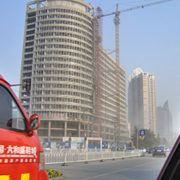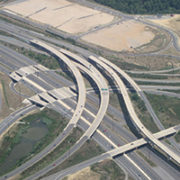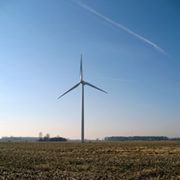Archive | Education RSS feed for this section
Economics, Education, Finance sector development, Governance and public sector management, Information and Communications Technology
 Economics, Education, Health
Economics, Education, Health
 Economics, Education, Environment, Health, Population, Social development and protection, Urban development
Economics, Education, Environment, Health, Population, Social development and protection, Urban development
 Economics, Education, Finance sector development, Governance and public sector management, Poverty, Social development and protection
Economics, Education, Finance sector development, Governance and public sector management, Poverty, Social development and protection
 Economics, Education, Finance sector development, Governance and public sector management, Infrastructure
Economics, Education, Finance sector development, Governance and public sector management, Infrastructure
 Economics, Education, Finance sector development
Economics, Education, Finance sector development
 Economics, Education, Finance sector development
Economics, Education, Finance sector development
 Economics, Education, Finance sector development
Economics, Education, Finance sector development
 Economics, Education, Governance and public sector management, Poverty
Economics, Education, Governance and public sector management, Poverty
 Economics, Education
Economics, Education

Mergers and acquisitions and corporate innovation

Technological innovation represents modern corporations’ endeavors to develop and accumulate knowledge, and it has long been recognized as a catalyst for economic growth and productivity increase (Solow 1957; Romer 1986; Aghion and Howitt 1992) and as a key factor in the competitive advantages of nations (Porter 1998).
Obesity in Pacific Island countries and territories: How big a problem is it?

The Pacific Island region is made up of 22 island countries and the territories of Polynesia, Micronesia, and Melanesia. There is great cultural diversity in the region, with about 1,200 languages spoken and a variety of exotic cultures. Surrounded by the vast Pacific Ocean, the land mass of the countries varies considerably.
Pointers from Asia for urbanization in Africa

Africa and Asia are latecomers to urbanization. In these two continents, less than half live in urban centers, while elsewhere, more than 70% of people do. But Africa and Asia are now rapidly urbanizing, with Asian cities growing at an average of 1.5% per year and Africa’s at 1.1% per year.
Costs of expanded public pension coverage in emerging Asia

The fiscal burden of public pensions in most emerging Asian economies is relatively small, reflecting relatively young populations and limited coverage of the retired-age population in public pension programs. Nonetheless, these conditions are likely to change dramatically in the coming decades. First, many Asian economies will face rapidly aging populations, which will raise pension and other old-age-related spending substantially. Second, as economies develop, political pressures to expand the coverage of public pensions and raise the level of pension benefits relative to income will likely increase.
Kick-start private infrastructure with future tax-sharing bonds

Everybody from President Trump to the Global Infrastructure Forum is trying to think of innovative ways to attract long-term private and institutional investors to pay for the huge and largely unmet demand for new highways, railways, and dams. Promising ideas, including guarantees or gap funding, the concessional blending of finance, and bankability enhancements, have been tried but are not enough to convince overseas pension schemes or high net worth individuals to invest their idling funds in worthwhile projects, especially in emerging economies with untried issuers (Regan, 2017).
Monetary policy spillovers in emerging Asia

For a number of years, the central banks of the major advanced economies have pursued historically unprecedented ultra-low interest rate policies and negative interest rate policies. Facing the zero lower bound problem, they have also implemented various asset purchase programs, known as “quantitative easing,” with the aim of reducing long-term interest rates. There has been growing evidence that advanced countries’ unconventional monetary policies (UMPs) have caused significant spillovers to the financial markets of emerging market economies (EMEs).
Asia’s financial connections with the rest of the world: Changing patterns

As economies in East Asia and the Pacific (EAP) have developed, they have also become important in international financial transactions, both as sources and destinations of cross-border bank lending, foreign direct investment (FDI), and portfolio investments. But, as we document in a new paper (Didier, Llovet, and Schmukler 2017), the composition of these financial connections has been changing in recent years on at least two fronts: (i) the partners with which EAP countries interact, and (ii) the type of financial transactions conducted.
Hometown investment trust funds: A sustainable solution for financing green energy projects

The Fukushima Daiichi nuclear disaster was an energy accident at the Fukushima No. 1 Nuclear Power Plant in Fukushima, Japan, initiated primarily by the tsunami that followed the Tohoku earthquake on 11 March 2011 and led to a nuclear shutdown in the country. Japan substituted the loss of nuclear power with fossil fuels, such as oil, gas, and coal, and became more dependent on their imports and consumption.
Why is Income Distributed Unequally? A Comparison of Japan and the United States

Japan and the United States (US) are at similar levels of economic development, yet their income distributions are considerably different. Whereas Japan has a relatively equal income distribution, the US is marked by a high level of income inequality. What are the sources of income inequality in both countries? Our latest research aims to uncover the sources on income inequality in both countries by exploiting detailed household panel survey.
Benefits of education and training for SMEs in Asia

The importance of small and medium-sized enterprises (SMEs) to economies in Asia is well known. They account for over 95% of all businesses, a third to half of aggregate output, and the majority of enterprise employment (Vandenberg, Chantapacdepong, and Yoshino 2016). We also know that SMEs do not have an easy life. They struggle to get established, face a higher failure rate than large firms, and lack access to key inputs such as finance. Finding ways to increase their survival rate and growth is important for expanding private sector activity in Asia’s developing economies. Sustaining enterprises requires that they are competitive; competitiveness, in turn, is based on productivity.


Search
Subscribe / Connect to Asia Pathways
Subjects
- Agriculture and natural resources
- Blog
- Capacity development
- Climate change
- Economics
- Education
- Energy
- Environment
- Finance sector development
- Gender
- Governance and public sector management
- Health
- Industry and trade
- Information and Communications Technology
- Infrastructure
- Miscellaneous
- Population
- Poverty
- Private sector development
- Regional cooperation and integration
- Sanitation
- Social development and protection
- Transport
- Uncategorized
- Urban development
- Video Blog
- Water
Recent Posts
- Navigating Linear Transport Infrastructure Through Conservation Landscapes
- How Are Technology Trends Shaping the Future of Insurance?
- Securing Asia’s Future Through Soil Health: Why It Matters and What Must Be Done
- Silent Struggles: Advancing Women’s Mobility with Public Transportation in Asia
- Mind Your Neighbors: Measuring Shrimp Farm Spillovers




Recent Comments